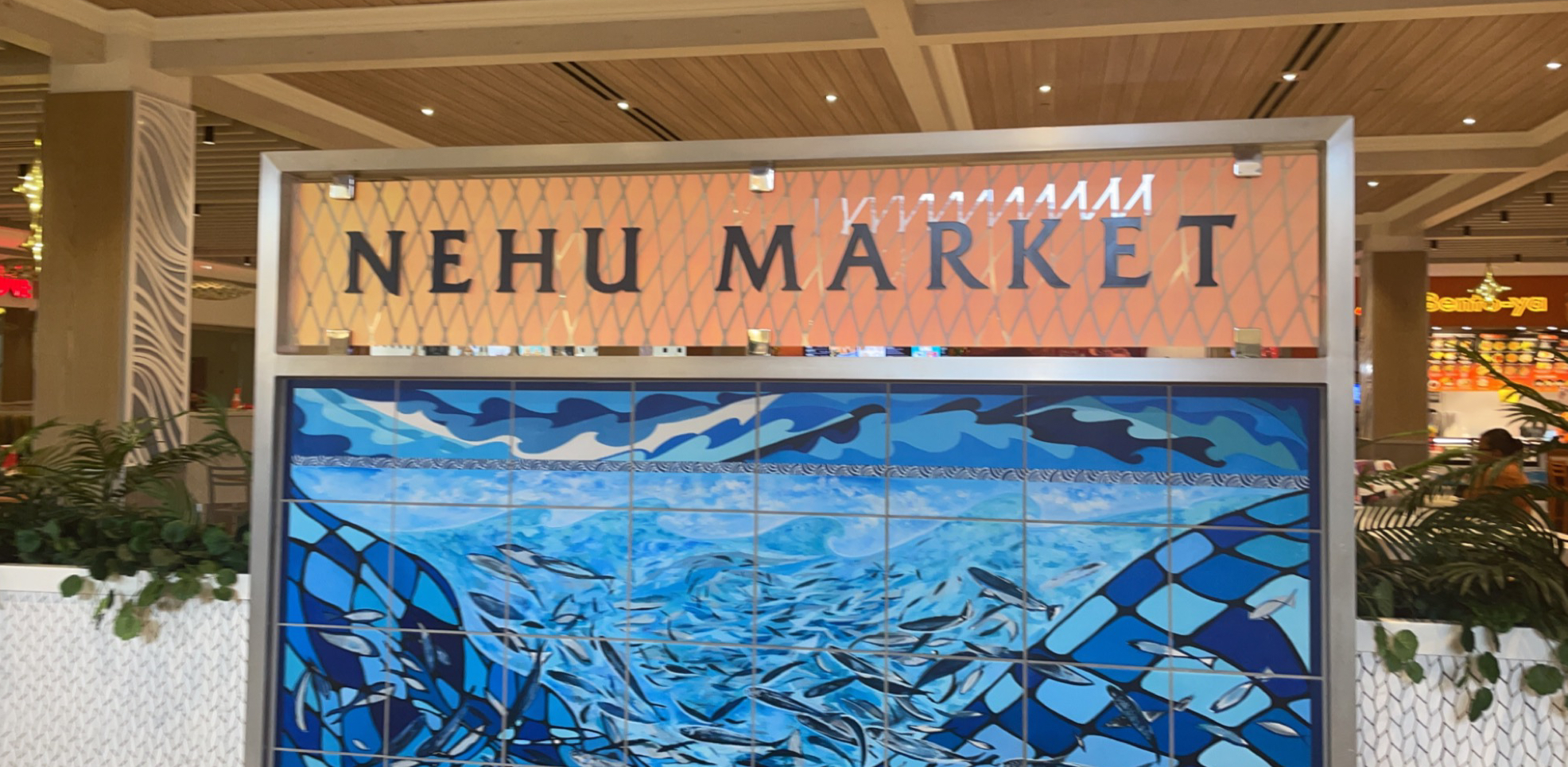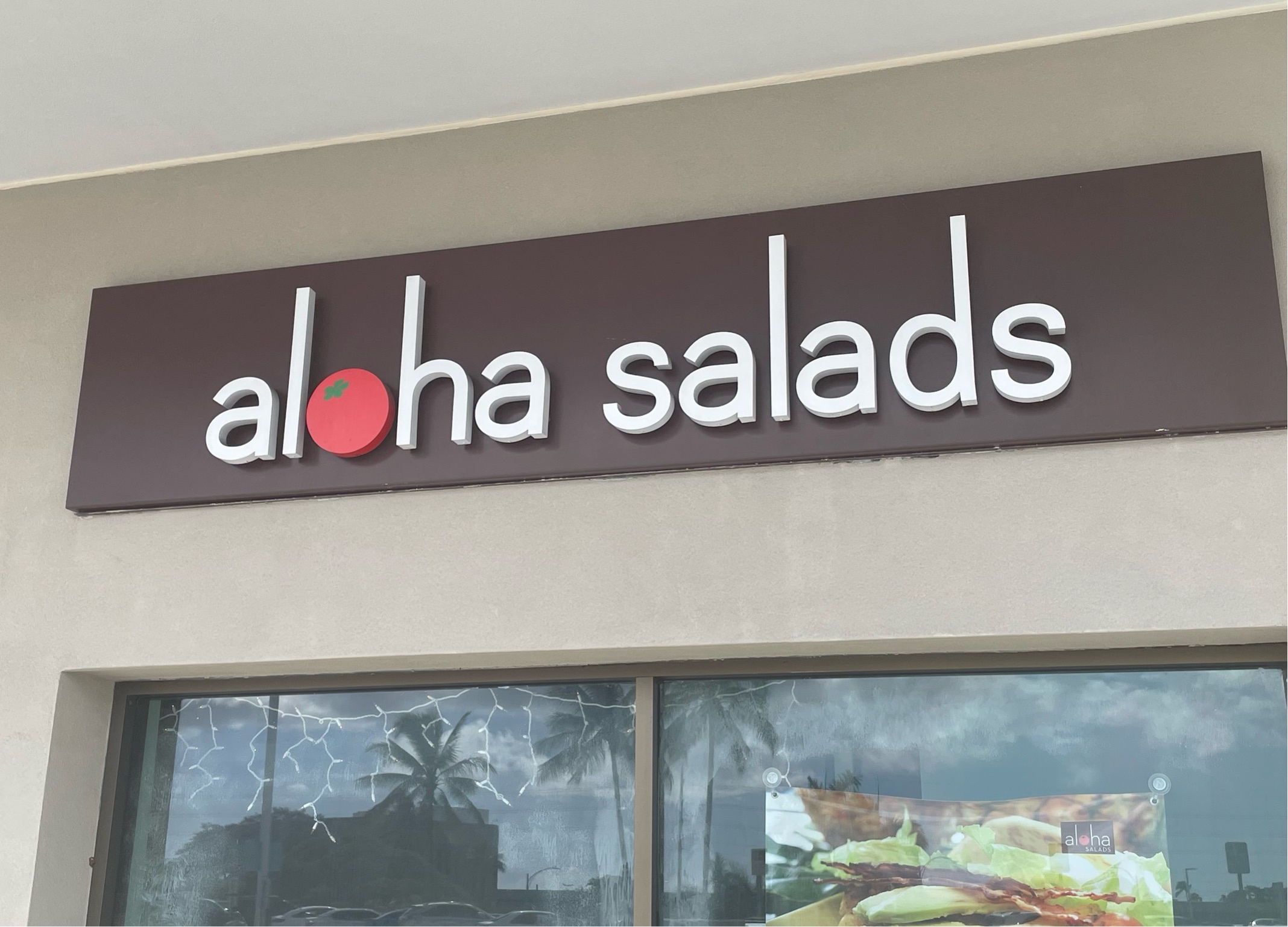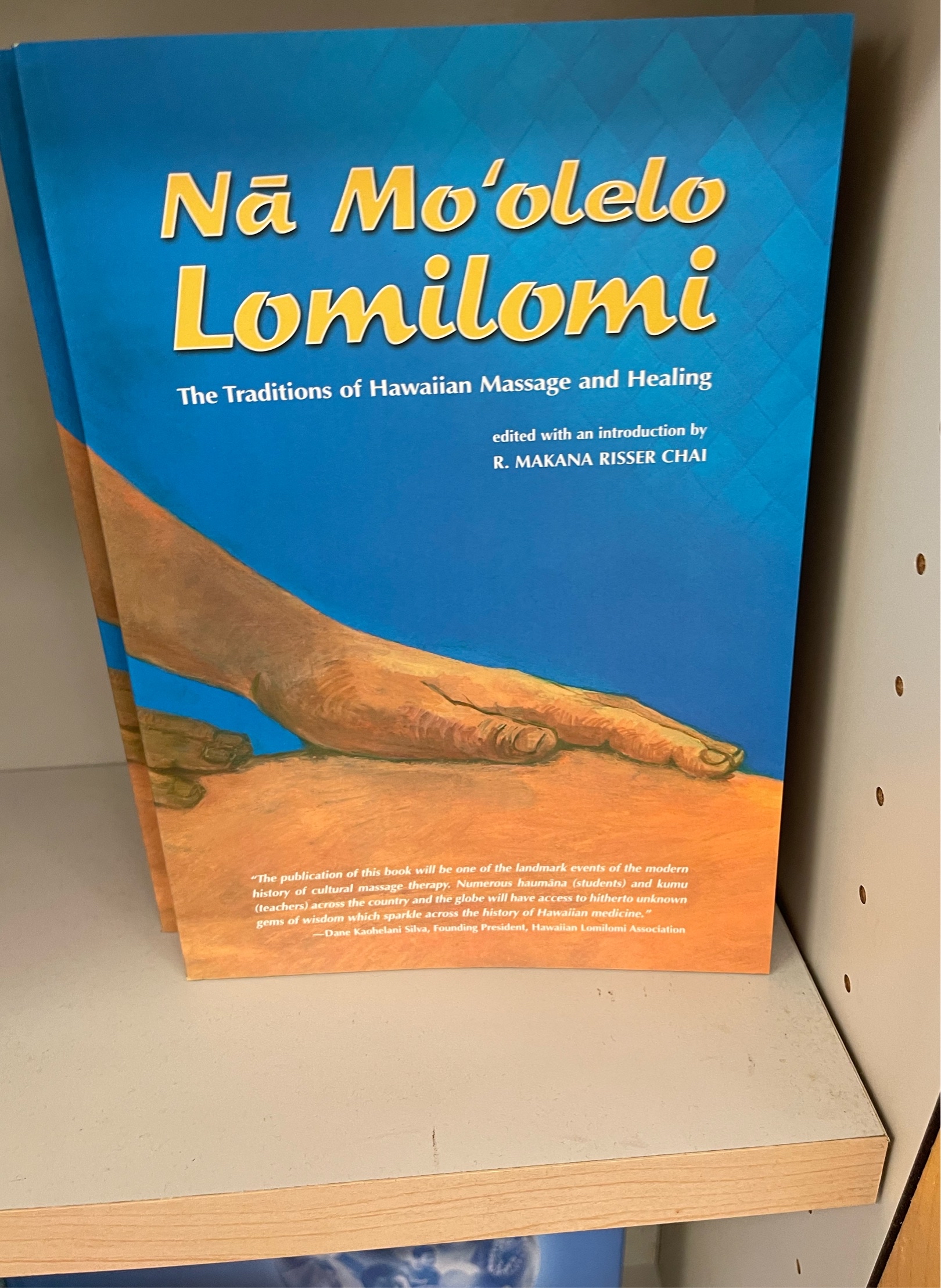|
ID |
Nickname |
Country / City |
Languages |
Taxonomies |
Comment |
Project / Group |
Map |

|
47205
|
|
United States
Aiea
|
|
|
EL-S Checkup #3: The domain is Downtown Pearlridge. Nehu market, nehu is a small bait used for fishing. It’s letting you know that you are in the food court area and it gives a bit of a Hawaiian feel. The audience is shoppers or more so locals who are looking for something to eat.
|
Multilingual Hawaiʻi
|
|

|
47204
|
|
United States
Honolulu
|
|
|
N.L
https://www.yelp.com/biz_photos/aloha-table-honolulu?select=AZBRhYyMHAxi5gvVkwtcGw
This photo is a recommendation board from a restaurant called Aloha Table. It has a Hawaiian food on it called the Loco Moco as well as the Hawaiian word E Komo Mai which means welcome.
|
Multilingual Hawaiʻi
|
|

|
47203
|
|
United States
Honolulu
|
|
|
The domain in this case is branding. The purpose of using Pidgin attract the locals into buying this snack. I believe most locals are familiar with li hing mui and could possibly be a favorite snack of the locals. By using “ono”, it attracts locals because they know that ono means delicious. The intended audience is locals. It is printed on paper. The implied message is to get locals to purchase a very famous snack that most or all locals know of. - CQ
|
Multilingual Hawaiʻi
|
|

|
47202
|
|
United States
Honolulu
|
|
|
The domain in this photo is branding. The purpose of using Pidgin in this case is to attract locals into being the local snack that is exclusive go Hawaii. The connection of locals to this snack could be personal and relating to cultural aspects. The intended audience is locals. It is printed on plastic. The implied message is to get locals to buy the local snacks that they all know of and are familiar with. - CQ
|
Multilingual Hawaiʻi
|
|

|
47201
|
|
United States
Honolulu
|
|
|
N.L
https://www.yelp.com/biz_photos/helenas-hawaiian-food-honolulu?select=ophTvBGOdpjWT9IIJFRz2Q
This photo is a menu from a restaurant called Helena's Hawaiian Food. This menu contains a variety of Hawaiian food such as Laulau, Kalua Pig, Lomi, Opihi, etc.
|
Multilingual Hawaiʻi
|
|

|
47200
|
|
United States
Honolulu
|
|
|
The domain in this photo is branding. The Pidgin in this case entices locals who are familiar with the food manapua. The word manapua comes from mea ono pua‘a. Mea ono meaning delicious pastry or cake and pua‘a meaning pork. The intended audience is locals who know that manapua is a steamed pork bun or char siu bun. It is printed on plastic. The implied message is literally what it means and to sell the product. - CQ
|
Multilingual Hawaiʻi
|
|

|
47199
|
|
United States
Aiea
|
|
|
EL-S Checkup #3: This is taken at Downtown Pearlridge. The title means “welcome” to the salad bar. The Hawaiian that everyone knows is Aloha. The domain is a shopping center. The audience is shoppers and locals.
|
Multilingual Hawaiʻi
|
|

|
47198
|
|
United States
Honolulu
|
|
|
The domain in this photo is branding and commodification. The Pidgin on this book is “pass on, no pass back”. This is a reference to a game that the author used to play as a child. It is when someone punches u in the arm and u have to pass it on to someone else. The intended audience is Pidgin speakers and those who are interested in the language of Pidgin. It is printed on card-stock and paper. The implied message is to show many short stories of the author in Pidgin. - CQ
|
Multilingual Hawaiʻi
|
|

|
47197
|
|
United States
Mililani
|
|
|
EL-S Checkup #3: The Hawaiian being used is Kuahelani, it’s letting you know what road you are on and where you are heading. The domain is the road heading towards Mililani. The audience is drivers and depending on if they want to head towards Mililani or going back to Waikele.
|
Multilingual Hawaiʻi
|
|

|
47196
|
|
United States
Aiea
|
|
|
EL-S Checkup #3: The Pidgin that is being used in this picture is “Shaka.” it’s a hand gesture that many people use here that could mean welcome or sending love. The domain is a grocery store. The audience would be grocery shoppers and people looking trying something new.
|
Multilingual Hawaiʻi
|
|

|
47195
|
|
United States
Aiea
|
|
|
EL-S Checkup #3: This was taken in a parking lot of the Aiea Shopping Center. The domain is a shopping center/food truck. The Pidgin that is recognized is Malasadas, which is a dessert that’s fried and has sugar on top. It’s a local delite. The audience would be locals who are looking for something sweet to snack on or tourists who are curious to try it.
|
Multilingual Hawaiʻi
|
|

|
47194
|
|
United States
Honolulu
|
|
|
The domain in this photo is branding and commodification. The Hawaiian in this case is “Hula Pahu” and this is the title of the book. It is also a direct translation of the subtitle, “drum dance”. The purpose of using Hawaiian adds credibility to the book because it talks about Hawaiian culture. It is natural to put the Hawaiian language when talking about Hawaiian culture. The book is specifically targeted on people who want to learn about Hawaiian culture specifically hula. This is printed on card-stock and paper. The implied message is to educate people about hula. - CQ
|
Multilingual Hawaiʻi
|
|

|
47193
|
|
United States
Honolulu
|
|
|
The domain in this photo is branding and commodification. The purpose of using Hawaiian in this photo is to connect the sole purpose of what the book is about which is to teach/learn about Hawaiian. The intended audience is those who are interested in the Hawaiian language and want to learn it. It is printed on card-stock and paper. The implied message of the Hawaiian title directly translated means “the eight seas”. - CQ
|
Multilingual Hawaiʻi
|
|

|
47192
|
|
United States
Aiea
|
|
|
EL-S Checkup #3: The languages being used in here are Hawaiian, English and Pidgin. The domain is the food court is located in Downtown Pearlridge. The audience would mainly be locals since the place is called “Rainbow Drive-Inn,” it can attract many locals but many shoppers that are hungry as well.
|
Multilingual Hawaiʻi
|
|

|
47191
|
|
United States
Kaneohe
|
|
|
N.L
https://www.yelp.com/biz_photos/wai%C4%81hole-poi-factory-kaneohe-2?select=bpE8L4F6j3RVgNxbGAMzYQ
This photo is a menu from a restaurant called Waiahole Poi Factory. There are 2 Hawaiian foods named in this menu. Kulolo, a dessert made with taro and coconut. Haupia, which is a coconut based dessert.
|
Multilingual Hawaiʻi
|
|

|
47190
|
|
United States
Honolulu
|
|
|
The domain in this photo is branding. The Hawaiian in this photo is to refer to significant places in Hawaii. For example, Mauna Loa is the name of a volcano and Hana is a place located on Maui. The intended audience is those who want to try Hawaiian-inspired ice cream flavors. It is printed on a cup-like pint. The implied message is that unlike other ice cream flavors this one is special and exclusive to Hawaii. The name of this flavor makes the audience question the connection of “Rocky Road to Hana” and the brand itself. I believe that it is just wordplay. - CQ
|
Multilingual Hawaiʻi
|
|

|
47189
|
|
United States
Aiea
|
|
|
EL-S Checkup #3 - this picture was taken at Uptown Pearlridge at Happy Wahine. The domain is Happy Wahine and the bag is named Ho’omau. Ho’omau translates to “the value of persistence and tenacity.” The audience would be shoppers because Happy Wahine is located in a shopping mall, it could also attract tourists.
|
Multilingual Hawaiʻi
|
|

|
47188
|
|
United States
Honolulu
|
|
|
The domain is branding. The purpose how Hawaiian is used in this case is to relate the Hawaiian language to aspects of its culture such as healing traditions. The intended audience is those who are interested in Hawaiian culture. It is printed on card-stock. The implied message is to spread Hawaiian culture. This book talks about Hawaiian culture and it’s healing so those who are naturally interested in the Hawaiian language could also pick up this book and read it because language and culture go hand in hand. - CQ
|
Multilingual Hawaiʻi
|
|

|
47187
|
|
United States
Kapolei
|
|
|
This picture was taken in Down to Earth in Kapolei (retail domain). A sign lists Hawaiian values and their meaning to the Down to Earth corporation. It is displayed in the deli/beverage section of the grocery store. Not many tourists go grocery shopping in Kapolei, so it must be for local people to see. The implied message is that Down to Earth’s business model is supported by Hawaiian values. (SM)
|
Multilingual Hawaiʻi
|
|

|
47186
|
|
United States
Honolulu
|
|
|
HC
medium: Packaging for puppy pads.
print: Block lettering over polyester bag.
message: "Ilio" means "Dog" in Hawaiian.
implied audience: Dogs, people who buy this for their dogs.
how it relates to language rights: Ilio Pet Products specializes in specialized goods for local pets in Hawaii. Easily identifiable by their name for locals to buy into.
|
Multilingual Hawaiʻi
|
|